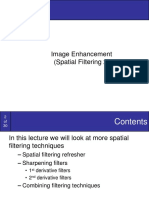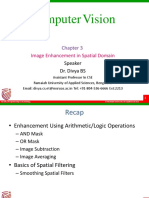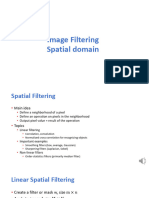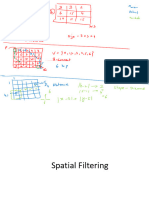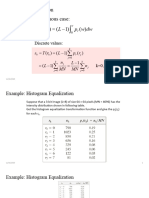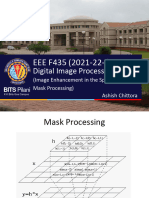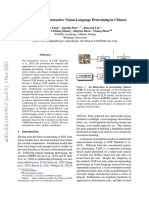0% found this document useful (0 votes)
56 views28 pagesSpatial Filtering & Image Enhancement
Digital image processing techniques can be used to enhance images. Sharpening spatial filters seek to highlight fine detail and remove blurring from images. The Laplacian is a simple sharpening filter that is based on the second derivative. It highlights edges and other discontinuities in an image. To generate an enhanced image, the result of applying the Laplacian filter is subtracted from the original image. This emphasizes edges and fine details, resulting in an improved sharpened image.
Uploaded by
asif01cseCopyright
© © All Rights Reserved
We take content rights seriously. If you suspect this is your content, claim it here.
Available Formats
Download as PPT, PDF, TXT or read online on Scribd
0% found this document useful (0 votes)
56 views28 pagesSpatial Filtering & Image Enhancement
Digital image processing techniques can be used to enhance images. Sharpening spatial filters seek to highlight fine detail and remove blurring from images. The Laplacian is a simple sharpening filter that is based on the second derivative. It highlights edges and other discontinuities in an image. To generate an enhanced image, the result of applying the Laplacian filter is subtracted from the original image. This emphasizes edges and fine details, resulting in an improved sharpened image.
Uploaded by
asif01cseCopyright
© © All Rights Reserved
We take content rights seriously. If you suspect this is your content, claim it here.
Available Formats
Download as PPT, PDF, TXT or read online on Scribd
/ 28



